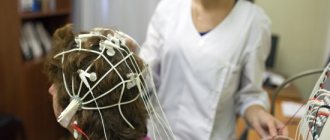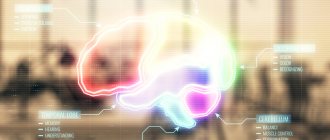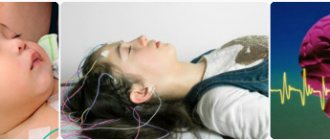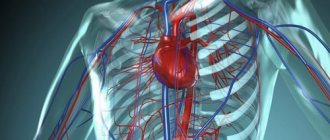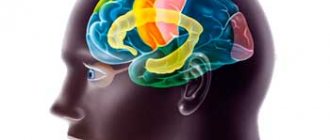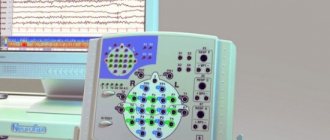The work of the brain does not stop for a second. Scientists, using a special device - an electroencephalograph, managed to identify several types of rhythm of electrical activity of this organ of the central nervous system. Thus, alpha waves of the brain are distinguished, as well as beta, delta, theta, sigma, and gamma rhythms. It is known that this indicator in different parts of the organ varies depending on the physical activity of a person. For example, the alpha rhythm is clearly recorded in a calm state and during REM sleep.
The meaning of alpha rhythm for humans
So, what is alpha rhythm? These are electrical fluctuations in the impulses of brain cells, due to which the work of this part of the central nervous system is carried out.
For the first time, the German psychologist G. Berger was able to record the electrical activity of the brain when examining the organ with an electroencephalograph. This device allows you to non-invasively, using special sensors, to study and record the processes occurring in the brain without resorting to craniotomy.
So, alpha waves in a healthy person have an oscillation frequency in the range of 8 – 14 Hz and are low-frequency. For this reason, they were recorded only during the rest period, since beta oscillations, reflecting brain activity during wakefulness, are dominant.
It has been scientifically proven that the alpha rhythm of the brain helps to reboot the entire central nervous system and activates the parasympathetic nervous system, which is responsible for the accumulation and restoration of vitality during periods of rest. These processes subsequently contribute to stress relief, relaxation and activation of mental activity.
In this regard, measuring the alpha rhythm is considered the most informative type of study of brain activity from the point of view of psychology; it is not for nothing that psychotherapists and hypnologists prefer to work with a person by putting him into hypnosis or doze. For example, a competent specialist, by introducing a patient into alpha rhythm, is able to relieve him of chronic fatigue caused by stress, depression and other psychological disorders. In addition, it has been scientifically proven that a person being in this state becomes more susceptible to information coming from outside and is easier to suggest.
In practice, it is not at all difficult to feel how alpha rhythms influence the activity of the brain; you just need to turn on the corresponding sound piece, listen to it carefully and try to relax. Usually within a few minutes you will feel relief and your anxiety will begin to subside.
A few thoughts.
But I’ll digress a little from the topic. The quote from the Czech writer and aphorist Gabriel Laub, which I included at the beginning of the article, is not accidental: have you ever thought about how poorly we use our brain resources?
Already in the last century, G. Laub noticed the global brain “laziness” of humanity. And why bother: calculators, computers, robots, finally, will do everything for us. This fact leads to the fact that over the last few tens of millennia the human brain has only been shrinking. What threatens us next?
In our age of total computerization, the need for a fairly significant part of brain activity disappears.
Did you know that as a result of, for example, counting on a calculator, not a single new neural connection is formed? Accordingly, not a single new convolution appears.
At this rate, the human brain will soon “dry up” completely, and terrible science fiction films with the triumph of robots over humanity have a great chance of coming true.
Let's each try to start with ourselves? To do this, let’s take a closer look at how neural connections are formed and what brain rhythms are.
Positive Impact
So, alpha brain rhythms predominate in humans during periods of sleep and rest, which is confirmed by numerous studies of people in a state of meditation and relaxation. A meditating person becomes more receptive to incoming information, mental images and abstract thinking become stronger. This allows you to delve deeper into mental work: it is not without reason that scientists believe that most discoveries were made in a state of alpha rhythm.
Alpha brain activity is observed in people capable of abstract thinking and creativity in all its manifestations, and only a small part of the population does not have this type of brain waves even in a state of sleep. In a healthy person, the normal amplitude fluctuations of alpha waves are in the range of 20-90 μV, but over time there is a decrease in this level, which is associated with insufficient blood circulation.
In alpha rhythm, the brain is able to absorb much more information than in other states. In addition, it contributes to the sharpening of intuition, as well as the arrival of new solutions to the assigned tasks. When the brain works in alpha rhythm, a person is usually inspired to solve life’s problems: it becomes clear what should be solved first and what should be left for later.
Physically, alpha rhythm immerses a person in shallow meditation and relaxation, and these states are known to support the physiological activity of the brain.
What is the positive effect of increasing the alpha rhythm of the brain on a person’s well-being? Everything depends on consciousness - with complete relaxation of the body and an increase in alpha waves, restorative and cleansing processes are launched, mental activity is activated, hidden abilities are revealed, the world begins to seem beautiful, problems fade into another plane.
Gamma
EEG shows that these brain waves have a frequency from 30 to 45-50 Hz. They arise when the brain needs to turn on the most concentrated attention. Gamma waves allow you to concentrate on solving non-standard problems. In addition, some experts are of the opinion that the enlightenment of Buddhist monks is also associated with the maximum frequency of gamma waves. Although this fact requires some verification and study, psychiatrists note that gamma wave disorder is also present in people with mental problems.
Stimulating gamma activity is possible only through the efforts of the person himself, since there is currently no possibility of artificially transferring him to a state of maximum concentration.
Pathological indicators of alpha rhythm
Measuring the frequency range of amplitude oscillations allows doctors to assess the patient’s mental state. To carry out this type of work, the alpha rhythm index of the brain is calculated, which in a healthy person is in the range of 75-95%. So, for example, its decrease below 50% indicates a disruption in the functioning and pathological diseases of the organ.
In order to accurately determine where the violation occurred, the patient is carefully examined and indicators are measured in different areas of the head with special sensors. For example, in diseases such as epilepsy, hypertension, and sleep pathologies, asymmetry of amplitude fluctuations is recorded in the same areas of the cerebral hemispheres. When the dysrhythmia of the indicators is more than 30%, the patient is most often diagnosed with a cyst, tumor, or injury to the corpus callosum.
Increased activation of the alpha rhythm of the brain is observed in people with abnormalities in the development of the organ, for example, in a child with oligophrenia, the frequency of the waves goes beyond the normal limits.
Increased synchronization of alpha rhythms between the hemispheres may indicate a mental disorder such as narcolepsy or sleep disorder. In this case, a weakening of alpha waves is usually recorded during light stimulation, which is carried out to assess the response of the cortex and subcortical formations in response to external stimuli.
On paper, the rhythm of the brain is represented as a curve, which is formed in the process of recording fluctuations in electrical activity. In a healthy person, the peaks and valleys have a clear organization. If they are arched, and in places pronounced, then this indicates a pathology in the functioning of the organ.
The appearance of an alpha rhythm in the anterior part of the telencephalon during wakefulness may indicate injury to the white matter, and on the contrary, the absence of waves with closed eyes indicates cerebral sclerosis, blindness, and Alzheimer's disease.
As an additional diagnosis, the alpha rhythm is assessed on the electroencephalogram for vegetative-vascular dystonia, suspected congenital or acquired dementia, trauma and tumors of the brain. It is also done in cases of loss of consciousness of unknown etiology, severe headaches, nausea or vomiting.
What to do?
Now there are a large number of methods for treating the disorder:
- medicinal;
- light therapy;
- psychotherapy.
Biofeedback therapy is quite common and involves constant monitoring of physiological parameters of the body over time. During the treatment course, physiological indicators are adjusted, for example, the functioning of the muscular system, blood circulation, and brain activity. This treatment allows people to cope with fears, panic attacks, and excessive muscle tension.
This method is most often used for headaches, spastic torticollis, stuttering, constantly shaking hands, high blood pressure, impotence caused by a psychological problem, and epilepsy.
Stimulation of beta delta and theta waves
In addition to alpha waves, the brain is capable of emitting other types of rhythms. From a scientific point of view, the most interesting are beta, delta and theta rhythms. Let's look at their main features:
- Beta rhythm. It intensifies in a awake person during conversation and mental activity. Stimulating this rhythm will help a person develop mental abilities, communication skills and concentration. It is not for nothing that people with high IQ have an outstanding beta rhythm of the brain. In order to experience the effect of beta waves, it is enough to turn on a piece of music containing binaural beats, read books, or simply drink a cup of coffee or strong tea.
- The theta rhythm is recorded in the deep sleep phase, when a person dreams. Under the influence of these waves, the body begins to intensively recover after a working day, and its physical and spiritual condition improves. Stimulation of the theta rhythm of the brain is used in the treatment of a patient with severe mental trauma that is deep in the subconscious. In order to feel its influence, you can listen to pleasant music, do meditation or yoga.
- Delta waves. This type of brain activity is responsible for the formation of the subconscious, and the waves begin to be intensely released during deep sleep, fainting or coma. You should not try to strengthen the delta rhythm on your own, since this can only be done safely by an experienced mentor, such as a healer, psychic, shaman or yogi.
In healthy people, alpha and beta rhythms predominate when awake. The more alpha rhythms, the less a person is exposed to stress, the more he has the ability to fully relax and the better he absorbs information. At this point, the body promotes the production of enkephalin and beta-endorphins. A kind of natural “drugs”. These substances are responsible for relaxation and joy.
Beta
The frequency of these waves varies between 15 and 35 Hz, and they are characteristic of a state of wakefulness. These are sharp waves in the brain, they appear after exposure to any stimulus and are accompanied by active external attention. It is beta waves that allow a person to actively engage in work, overcome routine problems and search for answers to ordinary everyday questions. Beta waves also allow you to maintain long-term concentration on one object or issue.
Stimulation of beta vibrations occurs through reading literature, drinking caffeinated drinks and smoking. In this case, it is most advisable to resort to reading, since this method is the least dangerous to health.
Theta rhythm
Theta rhythm (θ rhythm) is the state between sleep and wakefulness, the twilight zone. Stage 1 sleep. Changes in theta wave parameters are associated with a change in the state of consciousness from wakefulness to sleep. With a change in amplitude and frequency, dream images arise, and then sleep. Most people fall asleep and become unconscious. Removed from the frontal zones and hippocampus.
Amplitude: 20 to 100 µV
Frequency: 4 to 8 Hz
If you feel an unbearable desire to fall asleep, you have theta waves. Low-intensity theta waves are generated during emotional stress and when searching for something.
Mu rhythm
Main article: Mu rhythm
Mu rhythm (μ rhythm) - rhythm oscillation frequency from 8 to 13 Hz. The amplitude usually does not exceed 50 μV. It is registered in the Rolandic region, that is, according to the distribution of the beta rhythm (localized in the region of the Rolandic sulcus).
It has parameters similar to the alpha rhythm, but differs in the shape of the waves, which have rounded tops and therefore look like arches. Occurs in 10-15% of individuals. Associated with tactile and proprioceptive stimulation and motor imagery. Activated during mental stress and mental stress.
Additional indicators
Brain activity is related to the electrical activity produced by the brain. This activity is caused by impulses from nerve cells. However, the activity itself is insignificant and is expressed in millionths of a volt. Its registration is only possible using a diagnostic method such as electroencephalography.
Today, in addition to the alpha rhythm, there are 3 more main types of rhythmic indicators of the brain, each of which is distinguished by individual frequency indicators and state of consciousness. These include:
- Beta brain rhythm
The beta rhythm occurs in childhood at a time when the child begins to mischief, when logical thinking and control are activated. With normal developmental indicators, this rhythm is formed by 5 years. The rhythm frequency ranges from 13 to 38 Hz and the amplitude from 15 to 25 μV. Beta rhythms of the brain are formed naturally during wakefulness. In this case, the left hemisphere of the cerebrum is activated.
This rhythm also manifests itself during the process of processing information, when connecting logic and reflection. For example, when reading a regular article, it is beta waves that are activated. Without them, any active activity and communication is impossible.
However, with constant stimulation of beta activity in such ways, brain activity becomes overtired, sleep disturbances appear, and mood changes, which in some cases leads to severe nervous disorders.
- Delta rhythm of the brain
This rhythm is formed in the mother’s womb, and its registration is already available at the 4th month of pregnancy. Activation of delta waves occurs during deep sleep, with the absence of dreams. They are the slowest waves with a frequency of 0.1 to 5 Hz and an amplitude of 30 to 40 μV.
It occurs both during deep natural sleep and during narcotic sleep, as well as during coma. It is also observed when recording EEG from areas where a probable pathological focus or tumor is located.
- Theta brain rhythm
The theta rhythm begins to form from 2 months after conception, and its registration is possible as early as the 3rd month of pregnancy. Its predominance is observed until the child is 3 years old. In adults, it occurs at a moment of peace in a state of alertness, which subsequently turns into sleep.
Oscillations in the brain become slower and more rhythmic, ranging from 4.1 to 7.9 Hz, amplitude 30-40 μV. children's
Electroencephalogram of the brain
is a recording of the electrical activity of neurons in various brain structures, which is made on special paper using electrodes.
Electrodes are placed on different parts of the head and record the activity of a particular part of the brain. We can say that an electroencephalogram is a recording of the functional activity of the brain of a person of any age. The functional activity of the human brain depends on the activity of the median structures - the reticular formation and the forebrain, which determine the rhythm, general structure and dynamics of the electroencephalogram. A large number of connections of the reticular formation and forebrain with other structures and the cortex determine the symmetry of the EEG, and its relative “sameness” for the entire brain.
An EEG is taken to determine the activity of the brain in case of various lesions of the central nervous system, for example, with neuroinfections (poliomyelitis, etc.), meningitis, encephalitis, etc. Based on the results of the EEG, it is possible to assess the degree of brain damage due to various causes and clarify specific location that has been damaged.
The EEG is taken according to a standard protocol, which takes into account recordings in a state of wakefulness or sleep (infants), with special tests. Routine tests for EEG are:1. Photostimulation (exposure to flashes of bright light on closed eyes).2. Opening and closing the eyes.3. Hyperventilation (rare and deep breathing for 3 to 5 minutes).
These tests are performed on all adults and children when taking an EEG, regardless of age and pathology. In addition, additional tests may be used when taking an EEG, for example:
- clenching your fingers into a fist;
- sleep deprivation test;
- stay in the dark for 40 minutes;
- monitoring the entire period of night sleep;
- taking medications;
- performing psychological tests.
Additional tests for EEG are determined by the doctor–
who wishes to evaluate certain functions of the human brain.
The research in question is a literal recording of the activity (namely, electrical) of certain brain structures. The results of the electroencephalogram are recorded on paper specially designed for this purpose using electrodes. The latter are applied to the patient's head in a certain order.
Their task is to record the activity of individual parts of the brain. Thus, the electroencephalogram of the brain is a record of its functional activity. The study can be carried out for any patient, regardless of his age. What does the EEG show? It helps determine the level of brain activity and identify various disorders of the central nervous system, including meningitis, polio, encephalitis and others. It also becomes possible to find the source of damage and assess its extent.
When performing an electroencephalogram, the following tests are usually necessary:
- Blinking of varying speeds and intensity.
- Exposure of the patient's completely closed eyes to periodic bright flashes of light (so-called photostimulation).
- Deep breathing (rarely inhaling and exhaling) for a period of three to five minutes (hyperventilation).
The tests listed above are carried out for both children and adults. Neither diagnosis nor age affects the testing composition.
Additional studies that the doctor conducts, depending on certain factors, are the following:
- sleep deprivation for a certain period of time;
- passing a series of psychological tests;
- clenching the palm into a fist;
- monitoring the patient throughout the entire period of night sleep;
- taking certain medications;
- the patient is in the dark for about forty minutes.
Theta rhythm
Main article: Theta rhythm
Theta rhythm (θ rhythm) - the oscillation frequency of this rhythm is from 4 to 8 Hz. The amplitude ranges from 20 to 100 µV. Registered in the frontal zones and hippocampus.
The theta rhythm is associated with search behavior, increases with emotional stress, and is often observed in psychotic disorders, states of confusion, and concussions.
A high level of theta rhythm can indicate a state of drowsiness and fatigue, which can be a manifestation of asthenic syndrome, chronic stress.
Delta
Delta waves - 1-4 Hz, are produced mainly during deep natural sleep. However, they also appear when a person is in a dream under the influence of narcotic or psychotropic drugs. They are also recorded in comatose states. A small amount of delta brain waves are produced when a person is mentally tired, after a long period of intellectual work.
Delta waves are extremely characteristic of people immersed in very deep meditation (and not in light meditative relaxation, like alpha waves). The easiest way to stimulate the appearance of the delta rhythm is to breathe deeply rhythmically with a frequency of about 60 breaths per minute.

